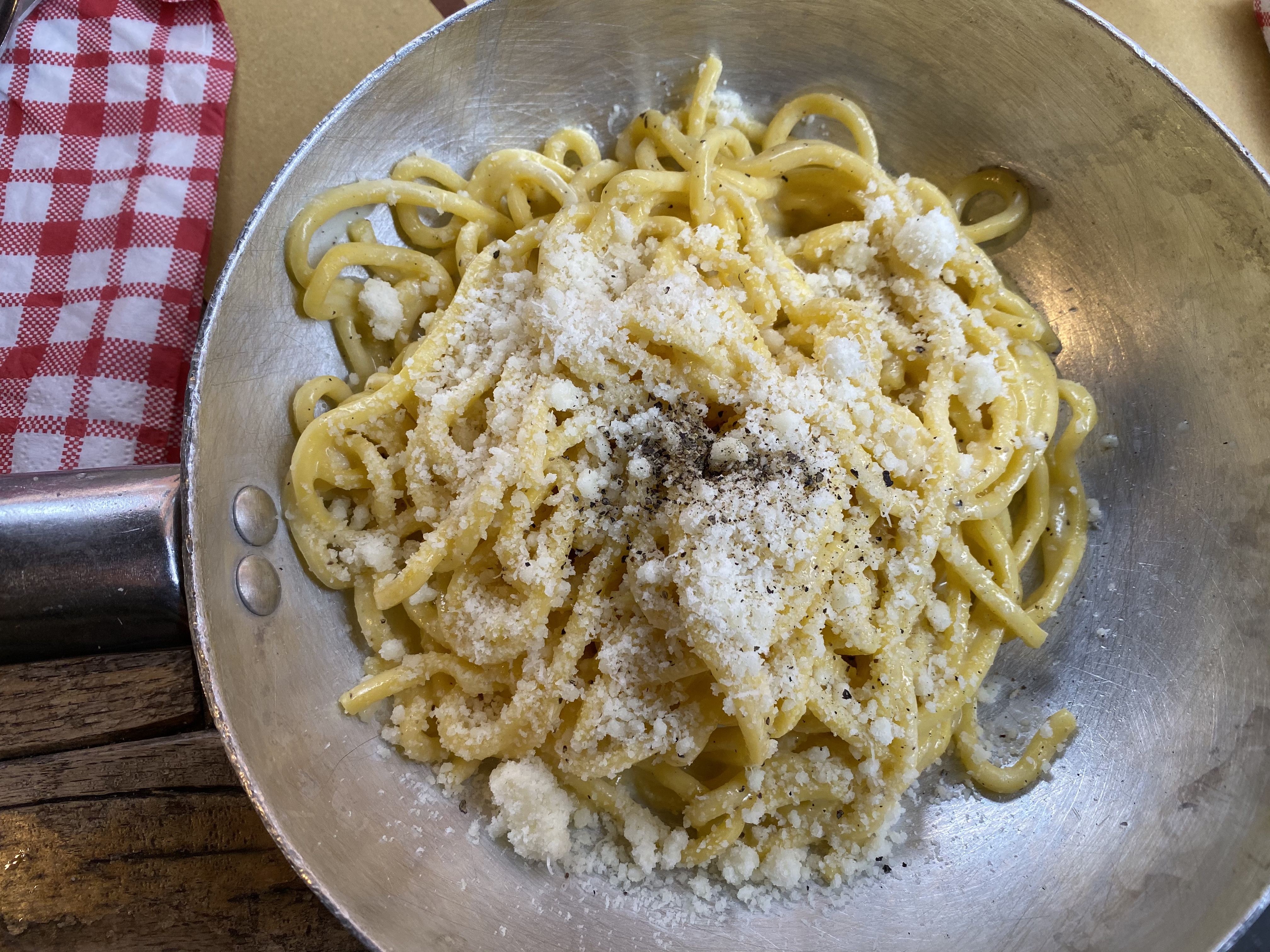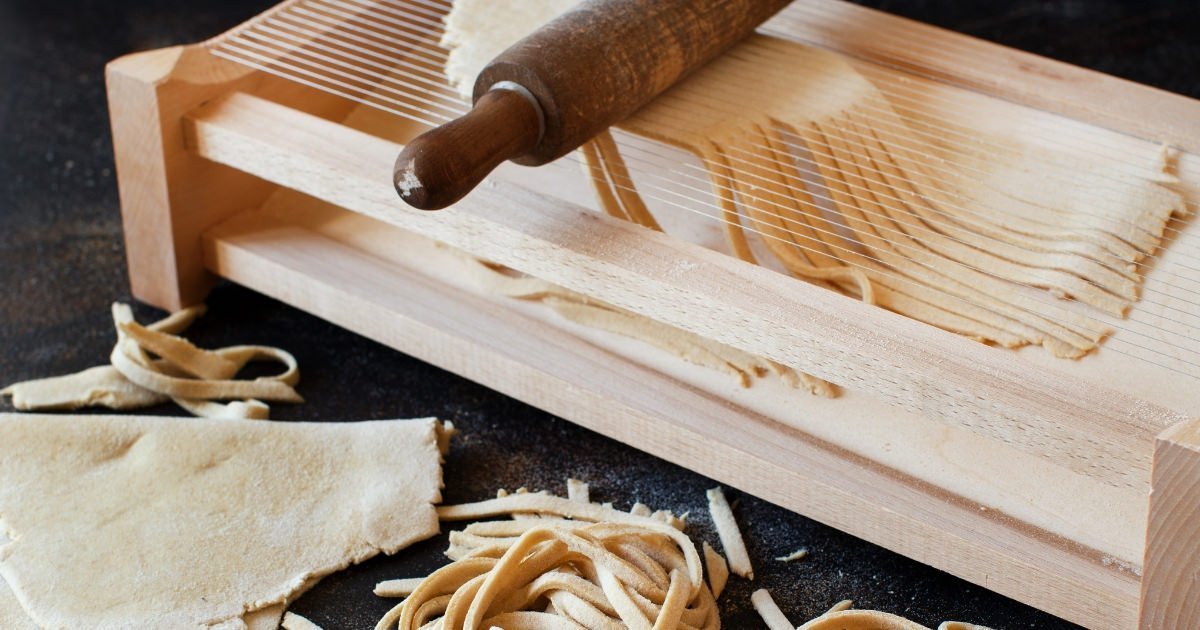Tonnarello's cacio e pepe
Written on October 9th, 2020 by Debashmita Poddar
Tonnarello gets the name from tonnarelli, also known as spaghetti alla chitarra. Chitarra in English means guitar. The pasta is given its shape by placing the rolled dough on top of the strings, much like guitar strings, and rolling the dough again, to cut out the pasta. It generally orginates from Abruzzo. In Lazio and some parts of Molise, it is called tonnarelli, and the single strand of pasta is a tonnarello. The restaurant complements its name by serving the tonnarelli shaped pasta with varied sauces.
Cacio e pepe literally translates to cheese and pepper. The sauce justifies its name by using only cheese and pepper to prepare. The cheese should be pecorino romano, which is a cheese made from sheep milk (pecora means sheep in Italian).

The history behind this famous Roman cuisine dates back to the ancient Roman times. The Roman shepherds spent months on the mountains, herding, during the spring and the summer months. They carried a sack of dried pasta, which provided them with the carbs needed for them to work, aged pecorino which won’t spoil easily, and pepper, which was available in abundance and would raise their body temperature during the cold nights. The sauce does not use any excess salt, since the pecorino is on the saltier side.
The pasta and the sauce looks simple to prepare, but the technique involved is hard to master. Tonnarello, in the Trastevere region, manages to withhold its tradition by making the perfect cacio e pepe. The pasta is handmade and cooked until it is al dente (to the tooth). The consistency of the cooked pasta must me soft and chewy, so that the flavour of the pasta oozes out during mastification. The creamy consistency of the sauce is made by mixing grated pecorino romano with the starch water from the cooked pasta. The dish is topped with freshly grounded black peppercorns, which gives a fresh and spicy feeling to the dish.
However, there is one downside to this delectable pasta; it is extremely heavy, and you might need to hit the bed after a scrumptuous meal. Nevertheless, the charm of Italy lies in those lazy afternoons, and as the saying goes, “When in Rome, do as the Romans.” So go grab a plate of cacio e pepe at Tonnarello, and get the best out of Roman cuisine.